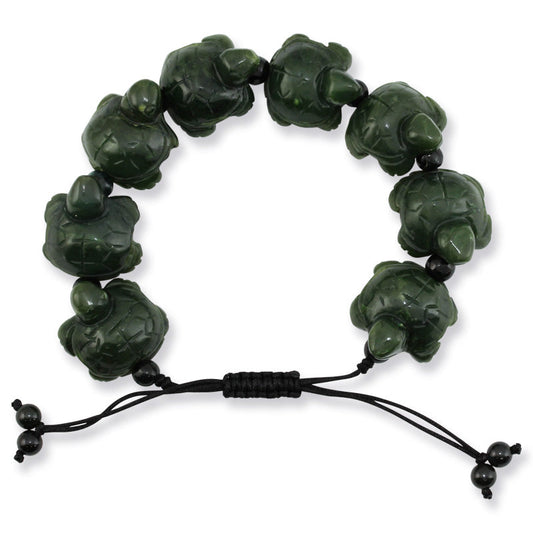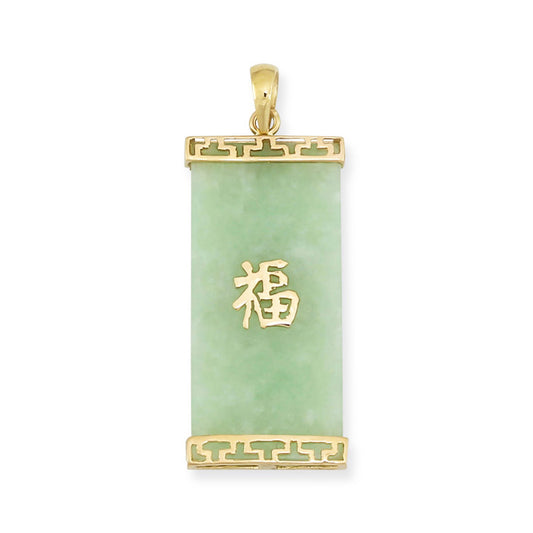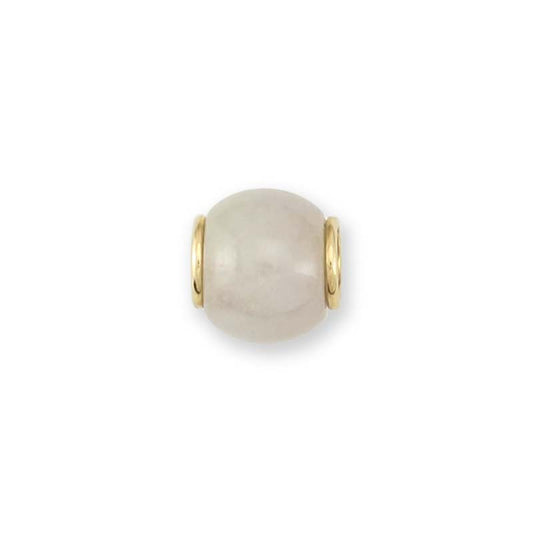Due to the high prevalence of treated jade and jade simulants masquerading as natural ‘A Jade’ on the market, customers may feel intimidated when it comes to jade shopping.
How do you know if it’s natural or treated?
How do you know if it’s real jade?
At Mason-Kay Jade, we've been dedicated to offering natural, untreated jadeite jade jewelry since 1976. Co-owner and graduate gemologist, Jeff Mason G.G., uses advanced gemological equipment to test each piece to guarantee authenticity and absence of dye, polymer-impregnation, and other treatments.
We also offer jade testing services to the trade and public! Click here to learn more.
In this guide, we'll share eight essential tips for purchasing jade jewelry to help you make an informed decision about your jade purchase.

Tip #1: Always Buy 'A Jade'
Natural Vs Treated Jadeite Jade
Before diving into the world of jade jewelry, it's crucial to understand the difference between natural and treated jade. Natural jadeite jade, like the pieces offered at Mason-Kay Jade, should come with a gem report (sometimes colloquially called a “cert,” short for “certification”) that explains how it’s been tested. Beware – Not all reports are created equal. The report is only as good as the lab or company that issues it.
Jade treatment is a hazard in the jade industry because treated jade is often sold as “natural” for unfairly high prices. In addition to being only 5-10% the value of it’s natural jadeite jade counterpart, treated jade is very brittle and has unstable color.
Here are the treatment codes for jadeite jade:
A Jade - Natural, untreated and genuine jadeite jade that may have a beeswax coating for protection. This particular type of coating is not noticeable to the naked eye and does not manipulate the appearance of the stone.
B Jade- Genuine jadeite jade that has been acid-bleached and then impregnated with polymer, wax or resin. B Jade is only worth 5-10% the value of it’s natural jade counterpart, but will often sell for much higher prices claiming to be “untreated.”
C Jade - Genuine jadeite jade that has been dyed. Low-quality jade is porous and absorbs dye quite well but be warned, this treatment is not permanent. The color can fade in sunlight or over time from normal wear.
B+C Jade - The most common treated jade on the market: a combination of B and C treatment. These pieces should only be worth <$20-$50 or so, but often sell for hundreds or even thousands from unscrupulous sellers.
Other treatments include resin-coating, doublets (or as I like to call them -- “Franken-jade”), bleaching and more.
Always seek a guarantee of authenticity and a reasonable return policy when purchasing jade jewelry (especially online) to avoid being bamboozled.
In the case of nephrite jade, treatment is not typically a concern for finished goods in the US market.

Tip #2: Always Buy Open-Back Jewelry
Avoid Hollow Cabs and Painted Stones / Mountings
Unscrupulous sellers may sell hollow cabochons (shown below) mounted with metal underneath the stone. This gives the appearance of a much more valuable stone, and can be difficult to detect without removing the jade from it's setting.
Additionally, some sellers paint the underside of a jade stone green to make it seem like it has a more vibrant color -- or they may add colored foil underneath the stone.
Always buy open-back jewelry so that you can see the bottom of the stone.

Tip #3: Familiarize Yourself with Actual Jade Colors
If it's bubble-gum pink, it's not jade.
Being able to recognize natural jade colors might save you a lot of headache when shopping for jade online. Bonus points if you can ascertain value from observing color and quality.
Jadeite jade comes in a variety of captivating colors, each with its own unique allure. From vibrant greens to soothing lavenders and colorless ice jade, our Colors of Jade chart, available for download on our website, showcases the beauty and diversity of jade hues.
While jade certainly can be vibrant and vivid, it's very rare to find colors such as yellow and red in "imperial" hues. Pink only exists as a pink-lavender hue in lavender jades. Blue jade is usually a grey-blue or a blue-green, and at it's finest an aquamarine-blue. However, blue jadeite jade is never a true royal blue -- as in the case of sapphire.
Tip #4: Stick to Your Budget
Some jades are more expensive than others.
Jade comes in a wide range of prices from FUN to FINE! When shopping for jade jewelry, consider jade quality factors such as color, translucency, and texture. While commercial quality jade may be more affordable, investing in higher-quality pieces can offer greater durability (the more translucent the jade, the more durable it can be!).
Jade is not priced per carat.
At Mason-Kay Jade, we offer pricing based on the inherent quality of each piece, ensuring you get the best value for your investment.
The more material used, the more a high-quality jade will cost.
If you're looking for fine, apple-green color -- just know that beads and bangles will be more expensive than a single cabochon. If you specifically want beads or a bangle, expect to pay more for highly saturated colors. Green jade usually costs more than the other colors (all other quality factors being the same), so consider exploring options in yellow jadeite jade or red jadeite jade.

Tip #5: Choose the Jade with Higher Translucency
Torn between two jades in the same price range? Go with the one that's more translucent.
Despite its reputation for toughness, jade jewelry is often subject to misconceptions. For instance, many people believe that jade breaks easily. There is even “advice” online encouraging customers to throw their jade-in-question on the ground – saying that if it breaks, it must be real. This is ludicrous!
Contrary to popular belief, jadeite jade and nephrite jade are both incredibly durable and resistant to breakage. With that being said, jadeite jade and nephrite jade both have ranges of toughness that correlate to their quality. This is to say, some lower-quality jades are easier to break than others. Be aware of any internal fracturing, "dry spots," and other flaws that may make jade more inclined to breakage. Most importantly -- the higher translucent a jadeite jade stone, the more durable it will be (exceptions include jade that may be fractured, cut too thin, and of course -- jade that has been treated.)
Side note: We can not emphasize enough how essential it is to be wary of treated jade, which is very brittle and may exhibit unstable color. At Mason-Kay Jade, we prioritize transparency and integrity, ensuring that each piece in our collection is natural and untreated.
Tip #6: Choose Jade that Fits your Lifestyle
Hard on your jewelry? Maybe you should buy jade beads or earrings.
Jade loves LOVE! Love your jade, wear your jade, and most importantly – touch your jade! The oils in your skin help protect the stone and keep it lustrous.
Jade should be handled with the same amount of care as any other piece of jewelry, so consider your lifestyle and habits when selecting a jade piece. For instance, some occupations are better suited for jade bangle-wearing than others.
If you’re hard on jewelry, a jade pendant or earrings are a safe choice. If you are careful with your jewelry, you should have no problems wearing a jade ring, jade bangle, or jade bracelet.

Tip #7: Beware of Simulants
Real Jade Vs Fake Jade
“Simulants” are gemstones that are being sold as something different from what they actually are. Gemstone type is determined by chemical composition and crystal structure, and can be identified by a graduate gemologist with proper gemological equipment.
Jadeite jade has many simulants that are unscrupulously called “jade” including dyed green quartz, grossular garnet, aventurine quartz, chalcedony and chrysoprase, serpentine and more.
Tip #8: Educate Yourself
It's important that you are confident in your jade purchase.
To make an informed decision when purchasing jade jewelry, educate yourself about the differences between natural and treated jade, jade colors, and symbolism. Check out some of the videos below for comprehensive information on jade and explore our resources to deepen your understanding of the gemstone historically described as "poetry without words."






